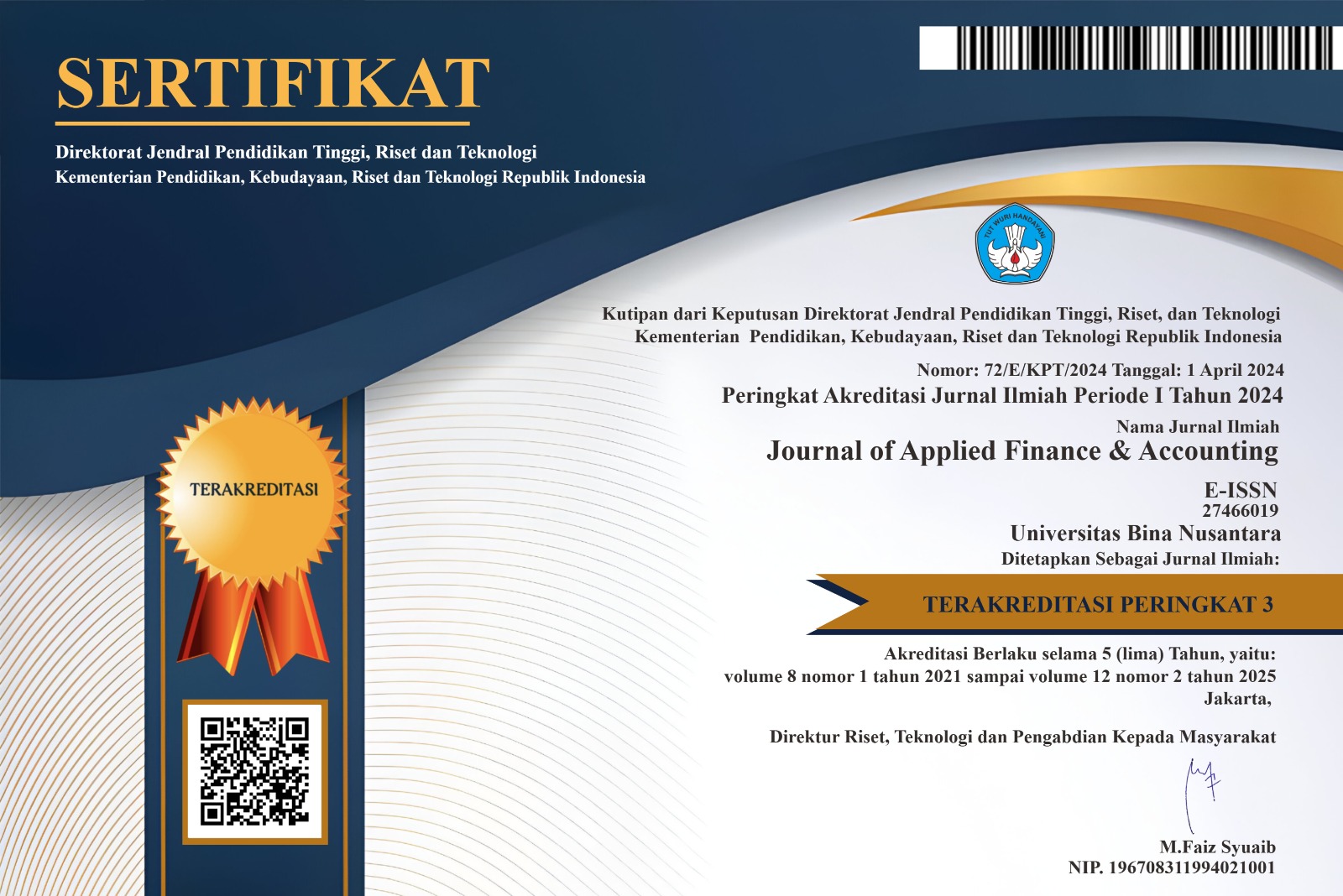DIVIDEND PAYOUT RATIO: FACTORS THAT AFFECT IT, AND SUBSEQUENT EARNING GROWTH
DOI:
https://doi.org/10.21512/jafa.v6i1.838Keywords:
Indonesian stock exchange, dividend payout ratio, returns on assets, debt to equity ratio, firm size, maturity, subsequent earnings growth.Abstract
This paper is to investigate the determinants of the Dividend Payout Ratio (DPR) of Indonesian firms. Five factors (maturity, cash availability, leverage, profitability, firm size) are analyzed as the DPR determinants.  Additionally, this thesis also examines the ability of DPR to serve as a signal subsequent year’s earnings growth. Multiple regression models is used in this paper to analyze research sample that consists of 180 firms that are listed in Indonesia Stock Exchange (IDX) and paid dividends during 2003-2008. The results shows that cash availability and maturity are significant determinants of DPR. Further analysis shows that the DPR signals subsequent earnings growth, the result concludes that mature firms has high dividend payment ratio, which supports firm lifecycle theory. High DPR results in high subsequent earnings growth, which supports Black’s (1976) claim that DPR carries information on future growth.
Downloads
Published
Issue
Section
License
Authors who publish with this journal agree to the following terms:
Authors retain copyright and grant the journal right of first publication with the work simultaneously licensed under a Creative Commons Attribution License that allows others to share the work with an acknowledgement of the work's authorship and initial publication in this journal.
Authors are able to enter into separate, additional contractual arrangements for the non-exclusive distribution of the journal's published version of the work (e.g., post it to an institutional repository or publish it in a book), with an acknowledgement of its initial publication in this journal.
Authors are permitted and encouraged to post their work online (e.g., in institutional repositories or on their website) prior to and during the submission process, as it can lead to productive exchanges, as well as earlier and greater citation of published work (See The Effect of Open Access).




